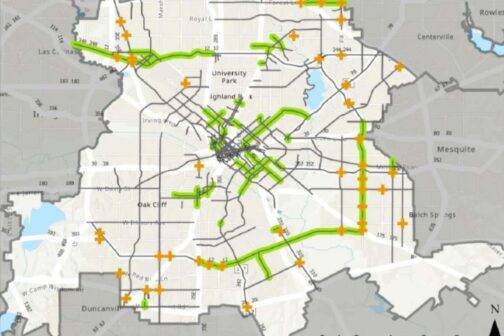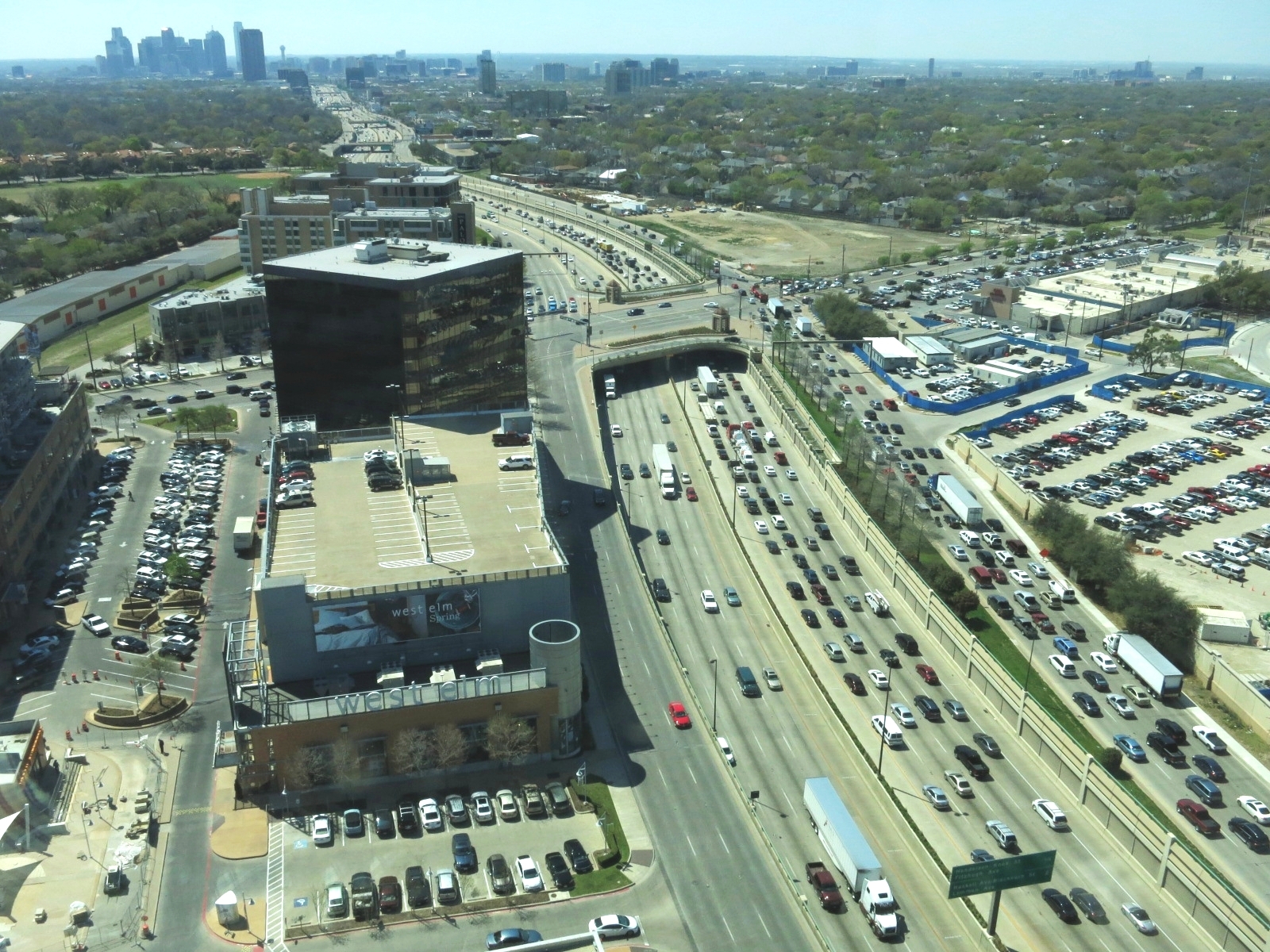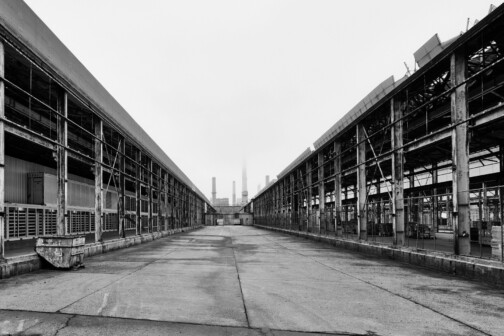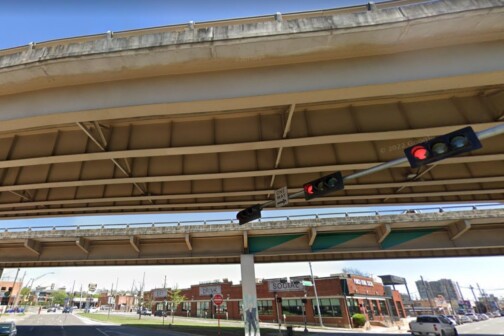Vision Zero has been one of the buzziest topics in urban planning circles over the last few years. The phrase describes a traffic safety strategy that is being rapidly adopted by cities throughout the country. Dallas was a little late to the party when it instructed city staff to begin working on its own Vision Zero policy in 2019. It took staff more than a year to bring an early version of the plan to council, which it unveiled at a briefing last week.
After hearing the briefing and looking at other cities’ experience with Vision Zero, I still have mixed feelings about the policy.
Here’s what I like about it: Vision Zero starts with the attitude that all traffic-related fatalities should be avoidable. The “zero” in Vision Zero means that cities should strive to have no traffic deaths. This may appear like an obvious goal—why would it be a city’s policy to allow some people to die in traffic? And yet, thanks to a sordid history, which includes all sorts of auto industry-led misdirection, traffic fatalities have generally been accepted as a side effect of the unquestioned need to drive cars in cities. Put that logic in another deadly industry’s familiar catchphrase: cars don’t kill people, people do.
Vision Zero says all traffic fatalities are unacceptable, and our streets and transportation policies should strive to reduce deaths to zero. That’s the part I like.
The part I don’t like is that cities that adopt Vision Zero policies haven’t really seen great results. Why? Generally, most Vision Zero plans create a laundry list of recommendations—from re-engineering streets to improving signage to enforcing speed limits—but often the little things get done and the big things don’t. Big changes to streets cost money, take time, and get snagged by politics. And yet it is precisely those big changes—like rebuilding streets so that they favor safer pedestrian and bike mobility over speeding up cars—that will eliminate traffic deaths. Big, multi-pronged Vision Zero plans can also obscure the reality that reducing traffic fatalities is not rocket science. It’s simple. To modify another over-used catchphrase: “it’s the streets, stupid.”
Dallas now has its own Vision Zero plan, and it is, predictably, filled with the usual laundry list of good ideas and few specifics. Vision Zero is also a plan layered on top of other plans. For example, in the presentation made to the council, among Vision Zero recommendations are “implement the priorities in the Sidewalk Master Plan” and “update the existing Bike Plan.” But if we have already have these plans, why do we need this new plan? Why don’t we just implement those plans?
This is part of what bothered me about Mayor Eric Johnson’s letter to Secretary of Transportation Pete Buttigieg last December about his priorities for the city’s portion of the big federal infrastructure bill. Johnson used the city’s new Vision Zero plan as a catch-all, and I understand why he did. Implementing Vision Zero means securing funding for things like bike lanes, improved traffic signals, and building more complete streets. But then, why not just say we want money for bike lanes, traffic signals, and better streets? My concern is that, in other cities, Vision Zero plans have done more to obscure priorities than champion them. In Los Angeles, for example, Vision Zero led to the introduction safety fixes, like curb bump-outs and diagonal street crossings, but at the same time, the city increased speed limits.
Maybe I’m being too hard on Vision Zero. After all, a big part of the idea is the vision—the new lens it offers to look at all these plans and policies. Dallas’ Vision Zero plan does shine a light on some pretty horrifying statistics. Dallas ranks No. 2 in the nation among large cities for traffic fatalities. More than half of those fatalities involve pedestrians or speeding vehicles. The plan also studied which streets and corridors were most dangerous and found that 8 percent of the city’s streets account for 60 percent of severe crashes. That offers the city a great blueprint for targeting necessary street improvements.
What the plan didn’t include, however, was a lot of detail about how it will prioritize, time, stage, or fund improvements. Staff told council that it would take upwards of another 24 months to refine and flesh out aspects of the plan, something that clearly frustrated West Dallas council member Omar Narvaez. “Twenty-four months ago—that’s when we voted for Vision Zero,” Narvaez said during the meeting. “Now staff is telling us they need another 24 months until we get the plan going.”
During this exchange, City Manager T.C. Broadnax jumped in to defend his staff, explaining that the city was doing all it could given limited human and financial resources. But the lack of resources—particularly the lack of funding for the larger and more impactful changes to street design—is exactly the reason why other cities’ efforts at reducing traffic fatalities proved half-hearted. During the exchange with staff, Mayor Pro Tem and Oak Cliff council member Chad West zeroed in on this.
“We need to put our money where our mouth is,” West said. “We have a $4.4 billion budget and $1.5 billion in general funds, and we’re only funding bike lanes to the tune of $2 million and traffic calming to the tune of $500,000. That’s not enough if we want to take Vision Zero seriously.”

West asked staff why it was only shooting for improving three additional pedestrian crossing per-year, and he wondered why the plan didn’t more aggressively target a revision to the city’s street design manual to reflect traffic calming and multi-modal transit priorities. North Dallas council member Cara Mendelsohn echoed this when she pointed out that the city’s design manual currently allows streets to be constructed in ways that are inherently dangerous.
“I don’t think we’re doing enough with ADA,” Mendelsohn said. “When I see poles in the middle of sidewalks, and the answer I get is it meets ADA—I mean someone had to go out there with a tape measure because it barely meets it.”
East Oak Cliff council member Tennell Atkins also pressed staff on how the plan incorporates considerations around equity—an important point considering that after Vision Zero was implemented in Washington D.C., deaths in predominantly Black neighborhoods actually increased.
Staff’s responses to these questions tended to hover around “I don’t know,” “we’ll get back to you with that information,” or “we need more resources.” Which, to me, perfectly illustrated how Visions Zero plans obfuscate action around transportation safety even as they illuminate good policy.
But what is real value of that illumination? We all know that the reason so many people die on Dallas’ streets is because the entire city, for the past 70 years, has been redesigned so that cars can move ever faster, thus making it more dangerous for pedestrians and bikes. We also know that fixing it will require redesigning nearly every street in Dallas. That is going to take a ton of time and a ton of resources. Chipping away it the problem at a rate of two or three extra crosswalks a year is not going to change anything.
At its best, Dallas Vision Zero plan offers some targets. We now know that only 8 percent of the city’s streets disproportionally account for most of the traffic fatalities in the city. The council should now make it a priority to complete rebuild every single one of those streets. Sound too big? Dallas has passed bonds over the years that funded much less important things than saving lives. And that’s what this entire conversation boils down to. Lives. Around 200 people needlessly die on Dallas’s streets every year. That’s not acceptable, and we can change it. But it is going to take a lot of money, a lot of political will, and a whole lot more vision and leadership.
Get the D Brief Newsletter
Author






